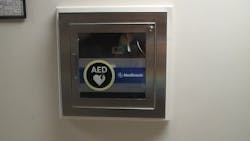Public to Get Access to Bleeding Control Equipment
WASHINGTON, D.C. -- “The fate of the wounded rests in the hands of the one who applies the first dressing.”
Dr. Nicholas Senn’s remarks in 1898 remain true to this day, said Dr. Richard Hunt, director of medical preparedness policy for the White House National Security Council.
That’s why the public should have access to tourniquets and other bleeding control equipment, Hunt told members of the Federal Interagency Committee on EMS (FICEMS) this week.
He noted that during recent incidents such as the Boston Marathon shooting and the rampage at the Naval Yard and theaters, civilians have jumped in to stop the bleeding. They used belts, shirts and scarves.
Hunt described a new nationwide initiative – Stop the Bleed -- being developed that would provide bystanders access to bleeding control equipment just as they have now with AEDs.
The project is spearheaded by the NSC as part of the Presidential Policy Directive 8. Webinars to explain the progress on the country's preparedness are scheduled as well.
He envisions the items being placed alongside the AEDs so they are easily accessible.
Hunt said it’s imperative that people act quickly to control blood loss.
"Anyone can stop the bleeding, but it must be fast...You can die from bleeding within five minutes,” he said, adding that anyone with proper knowledge and tools can save a life.
Hunt said the staff hopes ‘Stop the Bleed’ will catch on just as “See Something, Say Something” and “Stop, Drop and Roll.”
The committee developing the program, who studied incidents from the battlefield, envisions training the public in hemorrhage control.
In the future, apps could be developed as well to identify where the medical equipment is located.
Stakeholders from a number of organizations have been involved in the project, Hunt said.
In February, physicians from major medical organizations released a statement of support. “The goal of the initiative is to build national resilience by better preparing the general public to save lives by raising public awareness of techniques that can save lives by taking such basic actions as stopping life-threatening bleeding…”
Hunt added that bystanders have demonstrated their interest in helping others, and giving them the tools they need will save more lives.
